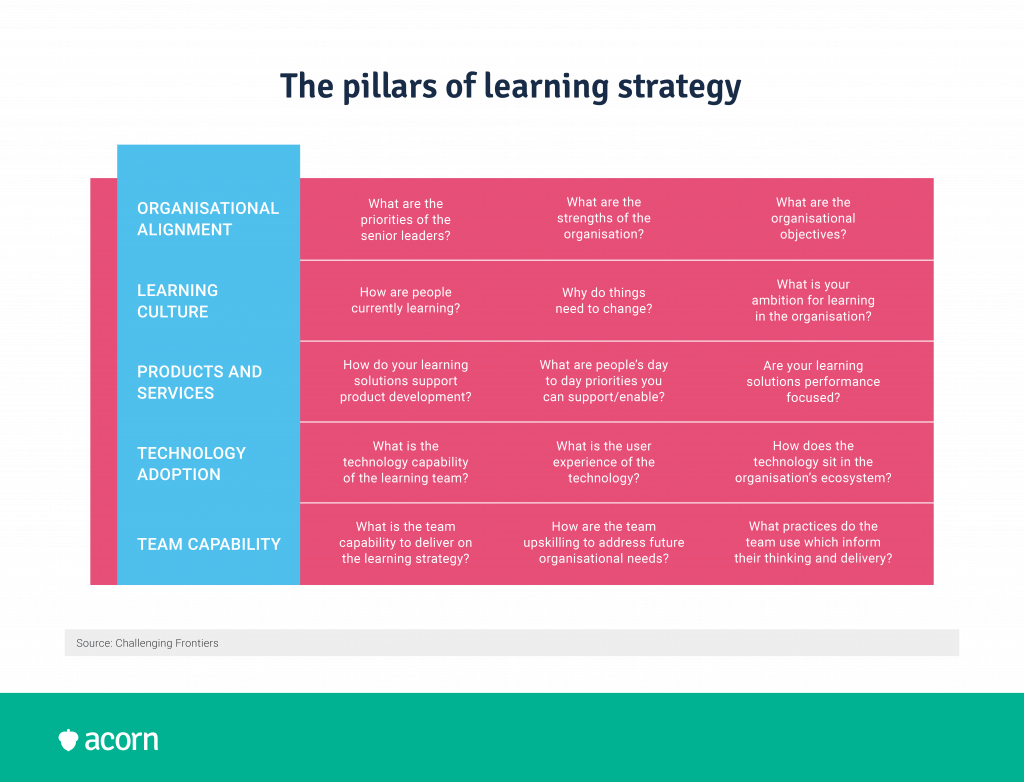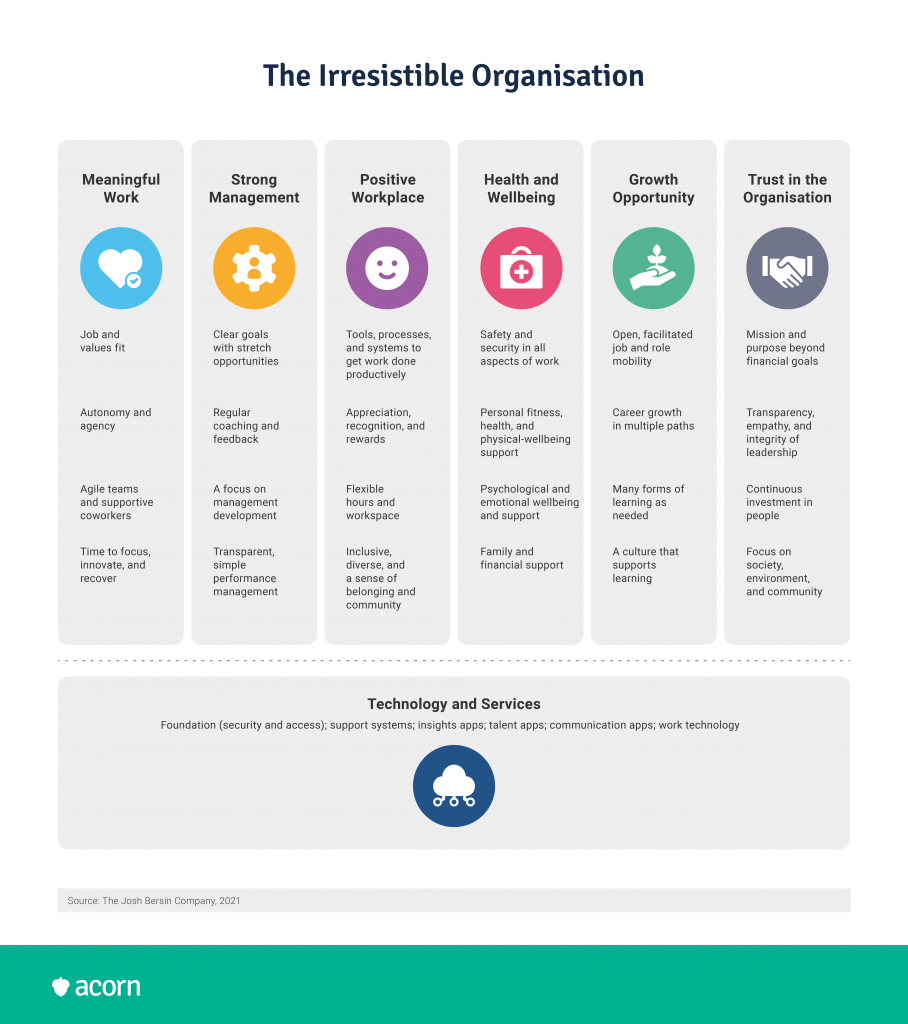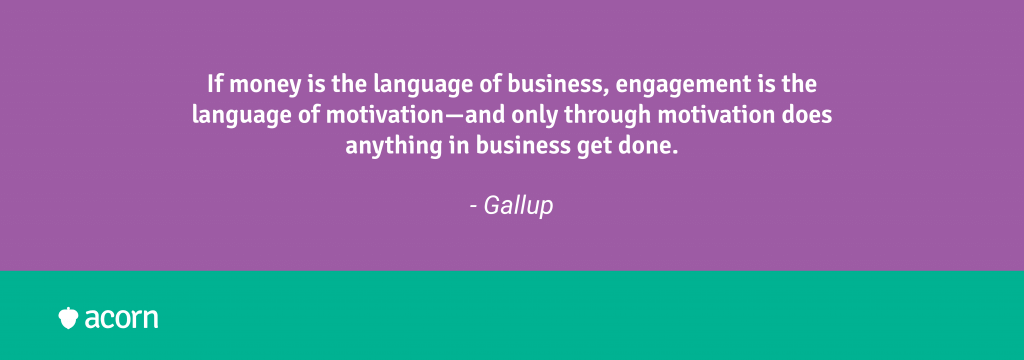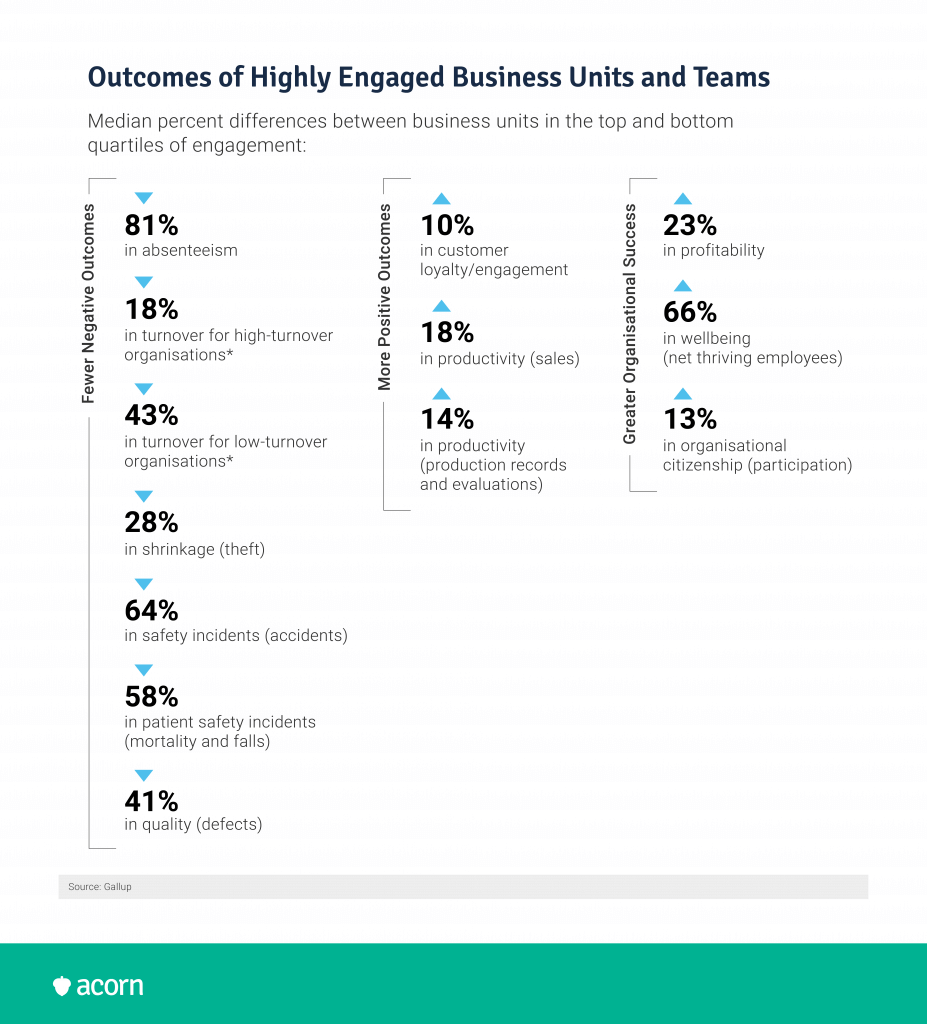Learn from these High-Impact L&D Strategies

Big or small, your organisation can and should learn from these high-ROI L&D strategies.
What You Can Learn from these High-Impact Organisations’ Learning and Development Strategy Examples
The learning and development (L&D) strategy plays a fundamental role in high-impact organisations. There’s no one-size-fits-all approach, sadly, but there are common approaches that can be applied in almost any circumstance.
Proactive, employee-centric and business-driven learning and development creates impactful ROI for the L&D function and, therefore, the organisations they serve. It all depends on your desired outcome. Without further ado, let’s look at some of the strategic ways industry-leading organisations utilise L&D.
What is the purpose of a learning and development strategy?
A learning and development strategy outlines how an organisation uses employee training to achieve business objectives. It is a core part of business strategy, using company needs, workforce capacity and capability gaps as the basis for personalised development pathways for employees.

Key elements of impactful learning and development strategies
Before we get into some heavyweight examples of L&D, let’s look at some of the shared tenets of truly impactful learning and development. You’ll find it comes down to a few simple elements: Forethinking, employee-centricity and the institutionalisation of learning.
Proactive, not reactive
Many organisations are stuck in reactive training models. They wait until a problem arises and then use it as the trigger for formal training. This may remain the case for certain styles of employee training, but it can’t be what an entire organisation’s L&D function (including budget and structure) is based on.
An effective learning and development strategy looks at predictive analytics (think skills gap analyses) to determine what is needed in the future business environment, now. Training programs then pre-emptively fill gaps, using L&D and organisational budgets more efficiently. Plus, it’s motivating for employees to see the link between their unique capabilities and the strategic objectives of the organisation.
Employees at the centre to drive business strategy
Employees are at the heart of what you do as they literally drive business strategy. A functional people strategy supports this. But what supports the constantly evolving culture and talent pipeline as your organisation grows? Learning and development.
Take Spotify’s approach. It’s people-first and purpose-driven to add business value, underpinned by business infrastructure (“Where are we going? How will we get there?”). They’re looking for new skills and traits that universities aren’t developing yet (ahem, proactive). But Spotify know, more than anything, that professional development gives:
- Employees a reason to emphatically contribute their value to the company’s mission.
- Organisations a collection of critical, sustainable and irreplicable capabilities.
Enable and empower lifelong learning
On the job learning happens every day. Think about an employee teaching another how to optimally utilise a software program. Or a senior associate answering a junior’s on-the-fly questions. The old “can you look over this quickly for me?” Account for and encourage informal learning as part of the employee development process.
Creating a culture of learning is just as important as working out how corporate learning will be formally carried out, because it ensures employees stay motivated to contribute to your organisation’s mission. (And employees who see how valuable their impact is to your organisation are more likely to keep their institutional knowledge and expertise within your walls.)

Learning and development strategy examples
As we’ve previously discussed, there should be a focus (or a few core focuses) for an effective learning and development strategy. Consider a business outcome as this will filter down into the attitude towards learning, products, tools and technology used, and ultimately, the capabilities developed.
Let’s look at how some industry leaders are implementing their learning and development strategies. Remember that while your employees may not number in the tens of thousands, the same foundational principles can be applied at your speed.
Yelp: A learning and development strategy for learning culture
A mature learning culture is replicable, measurable and impactful. Online directory Yelp is an excellent example of a strategically impactful learning culture that consistently develops people from the moment they enter the organisation.
Approach
Yelp utilises two best practices for their learning and development strategy:
- People are placed in stretch roles—positions for which they possess most of but not all the required skills.
- Internal promotions to inspire a culture of mentoring.
Lunch and learns, leadership passion/expertise presentations, internal guest speakers and company hackathons are all activations used in the everyday flow of work by Yelp. Anonymous surveys give further insight into how things get done compared to what things get done.
Impact
90% of employees rated their managers as effective as a result of training actions taken from those anonymous surveys. Better yet, 98% of sales management roles became internal hires—from a pool where the majority have never worked in sales before. Oh, and not to mention, this whole strategy was done with an L&D team of one.
Applying it
Take lunch and learns: These can be work-related (and therefore valuable for other roles in centralised teams) work-adjacent or even just based on personal interests. People talk about things they are confident in or passionate within a familiar environment and with friendly faces. This gets employees experienced with speaking authoritatively on areas of expertise.
Then there’s the leadership presentation tactic. It’s based on the idea of paying it forward—“it” being knowledge and deep expertise gained through a level of experience. All of this is rather informal mentoring. Consider your formal mentoring endeavours as another pathway to succession. As well as matching candidates to enable general career development, look to create mentoring partnerships with very tangible end goals like immediate succession.
What’s the L&D ROI win? We know that business leaders want to see strategically impactful metrics like employee engagement and team effectiveness. Low-cost and employee-run learning events that encourage collaboration are shown to improve the employee experience as they rest on individual motivation to share critical knowledge.
Essentially, you’re getting some capability development for free by imbuing mentoring opportunities into the day-to-day. You’re also architecting your business for change with a positive learning environment. Agility is continuous and driven by iterative, small changes.
Gallup might sum it best.

Google: A learning and development strategy for continuous learning
Google’s strategy is based on the notion that while people readily forget learned knowledge (50% lost within the hour), they don’t necessarily need another course to reinforce that information. Their aim was to make learning sticky and avoid overwhelming employees with information.
Approach
Microlearning is a mainstay of digital learning, though it’s often talked about as a tactic within learning technology. Google thought outside the software box, using daily systems of productivity to help upskill their managers.
Their take on microlearning, Whisper Courses, is a series of emails that suggest (“whisper”) something for managers to try in 1:1s or team meetings. Whispers needed to be simple enough to fit on a post-it note and easy enough to carry out during a normal workday.
Impact
Whisper Courses became a follow on from performance reviews for managers. New series were sent to a manager based on their weakest skills. Through the tailored Whisper Course, Google managers improved on that behaviour by anywhere from 22 to 40%.
Applying it
Acknowledging good work or validating their team’s processes may not come naturally to new managers in particular. So, we’d posit there’s a third necessary facet Google doesn’t explicitly require of whispers: It encourages a behavioural change.
As for the forgetting curve post-training, we’ve seen many formal training programs that don’t help learners contextualise learning in their environment. Offering guidance, or whispers, helps put information to work as your organisation needs.
Your Whispers should:
- Be purposely short, so it can be applied in the flow of a manager’s day.
- Include at least three whispers in a course.
- Support a course or serve as a standalone microlearning tactic.
- Have a learning objective, target audience and metrics for evaluation for the entire series.
- Provide context (a what and a why), a call to action (when and how) and reason to actually try the whisper out.

What’s the win for L&D ROI? There’s this perception issue that L&D doesn’t have an impact. All the more reason for post-training enablement, we say.
No job is free of challenges, which makes real-time identification of them important. Nurturing skills on the job means you’re meeting people where they’re already applying them (which 68% of employees prefer), and using technology means you can get analytics on engagement rates. Plus, while using analysis after-the-fact doesn’t prove causation, it can be helpful when articulating the compounding value of L&D.
See Google’s full L&D strategy template for Whisper Courses here.
itsu: A learning and development strategy for employee experience
There are a few monikers we could give to British sushi chain itsu’s learning and development strategy: A strategy for employee retention, a strategy for costs savings, a strategy for capability building.
But the reason we’ve gone with employee experience is because itsu probably shows best how employees should be at the centre of everything you do, especially if the outcomes are business-related.
Approach
itsu was experiencing an extremely high turnover rate on a critical role, their fish cutters. Each fish cutter has to cut 40kg of fish into 3,000 precise pieces every day while sticking to strict OH&S standards. Their turnover rate began to near 100% every year, increasing recruitment costs and operational challenges.
The company revamped their training masterclass for fish cutters, making it an accredited course. Trainees graduated with a recognised certificate and received ongoing support post-training. They also got a pay rise, a new title, Fish Pros, and could compete for Fish Pro of the Year—the winning prize being a weekend for two in New York.
Impact
Investing in personal development plans saved itsu almost $1 million in decreased labour costs and almost double that amount on otherwise wasted food. The number of itsu shops that didn’t have a Fish Pro dropped from 40% to 9%.
Applying it
Tie individual courses more closely into your overall business strategy with something like a capability academy. It’s a digital spot for mapping learning content to capabilities and capability gaps. Learning management systems (LMS) are an example.
For employees, this means that any credentials they achieve can be validated for promotions or pay increases, and they can visibly see and own their progress along personal development plans.
For L&D teams, they’re supported by business when aligning learning topics and strategy, rather than running point on training alone. Employee capabilities can be delivered and monitored at scale as well, making talent management a much more streamlined process.
What’s the L&D ROI win? Say the reason many itsu stores didn’t have a Fish Pro was because they felt inadequate in their abilities—that negatively impacts their employee experience, causing them to quit and business to feel the pinch on revenue. Post-capability academy, you can track employee engagement, attrition and behavioural changes against key performance indicators.
Learning analytics alone won’t sell the value, which is why you want to prioritise learning activities by business impact on business performance. Connecting learning and development needs to business outcomes means you’re able to prove the direct line of causation between L&D and business impacts.

See a learning and development strategy template for itsu’s approach here.
To sum up
What we’ve talked about aren’t new ideas, rather new approaches. Technology has evolved to enable faster, smarter and shrewder corporate learning that directly aligns with business goals. Regardless of if you’re designing a learning and development strategy for employee experience, continuous learning or learning maturity, focus on the business wins.
An L&D strategy that is employee-centric and proactively addressing business challenges and capability gaps will provide the long-term competitive advantage you’re looking for.